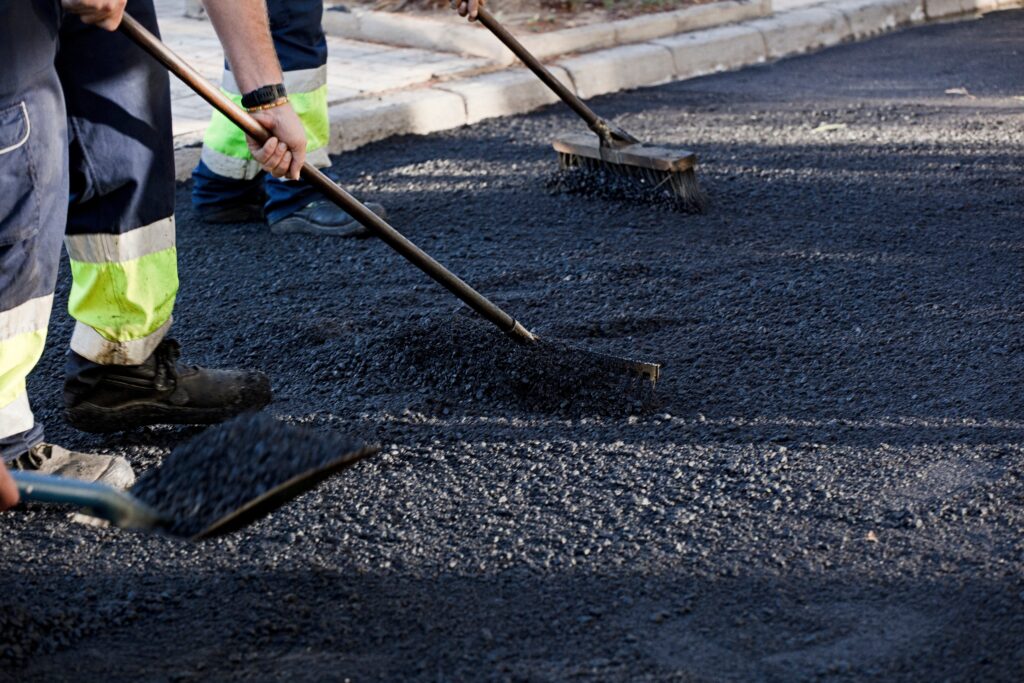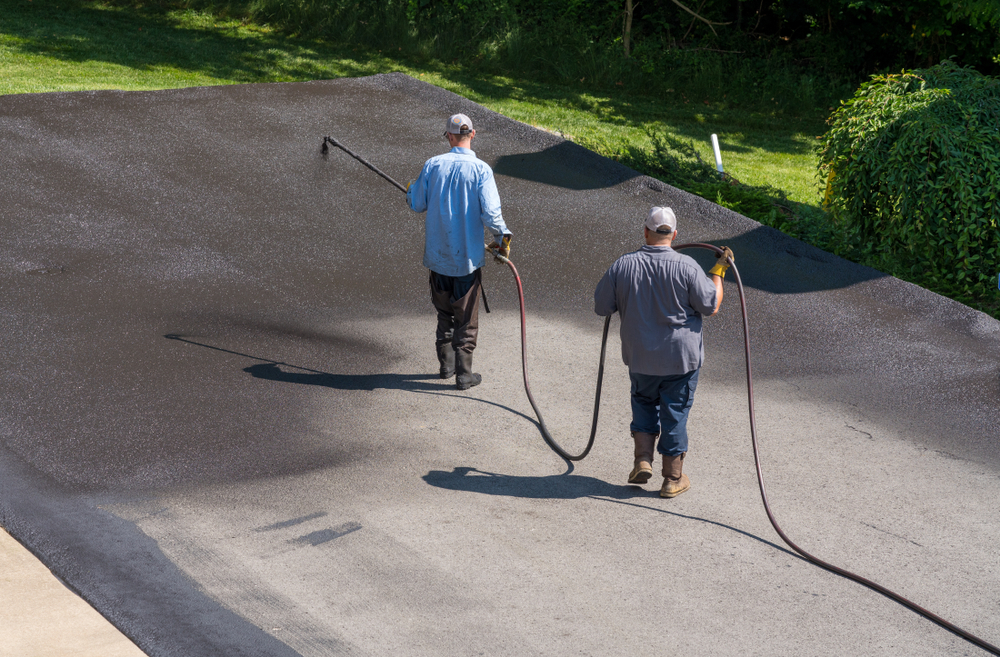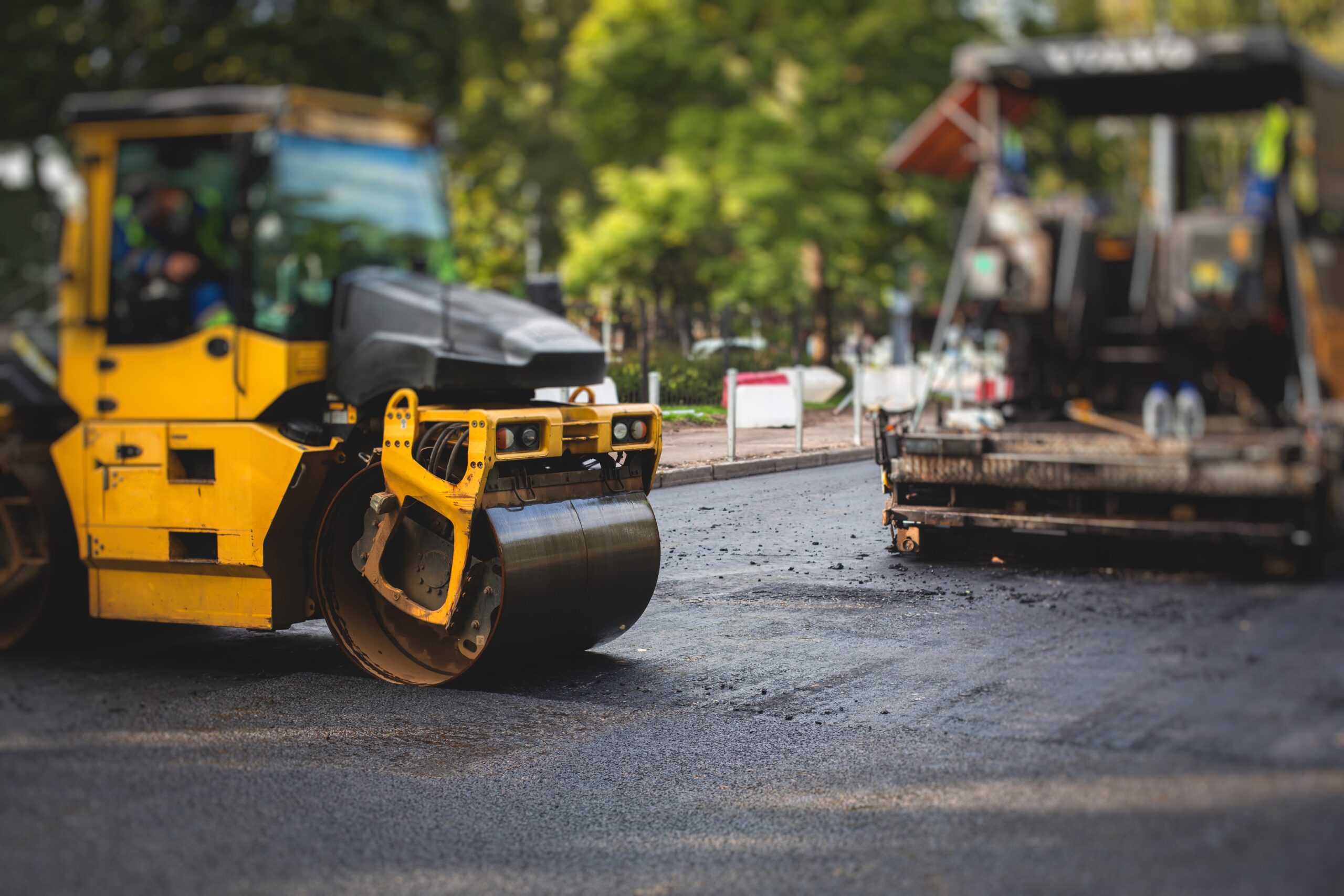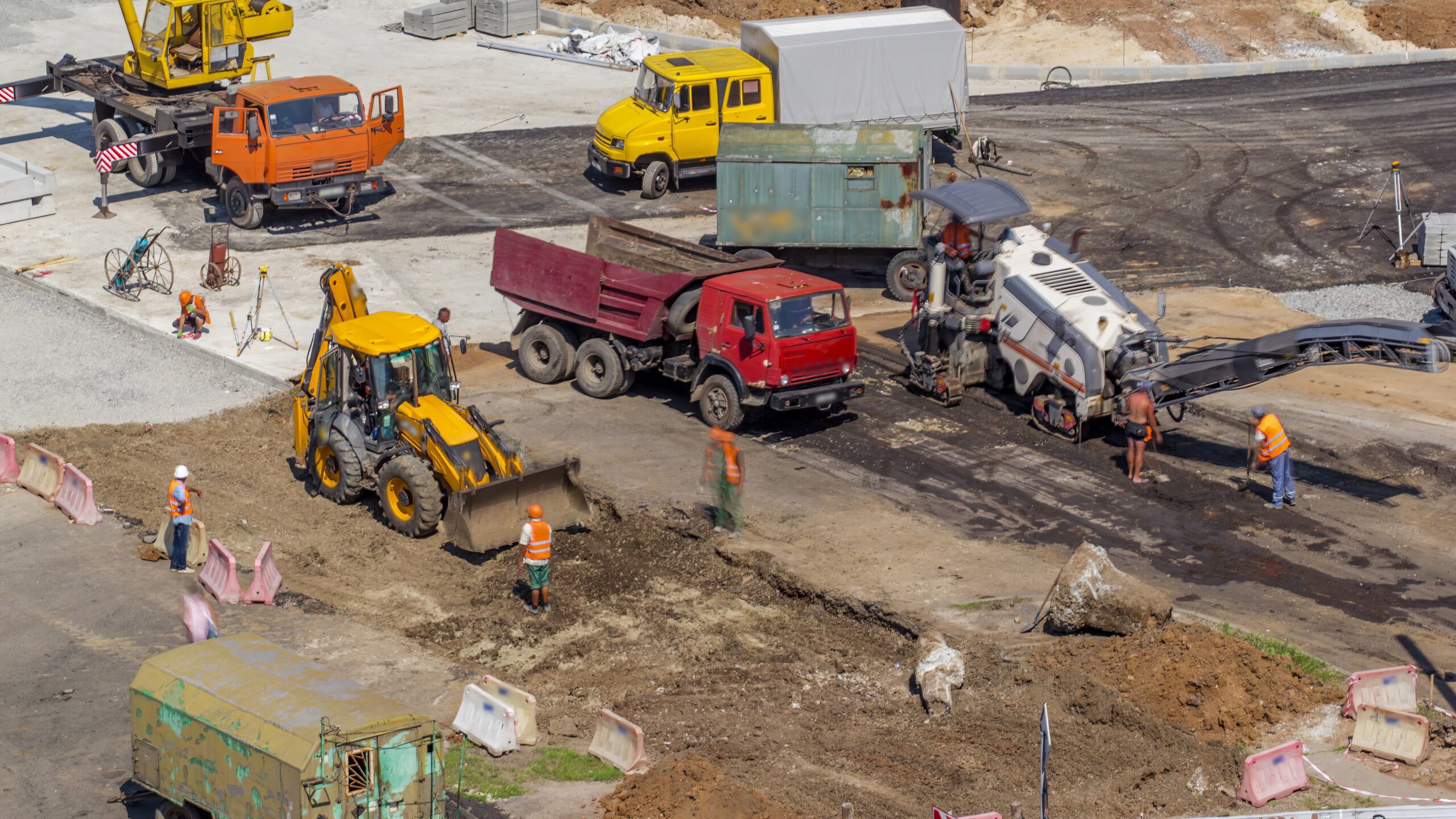
Maintaining asphalt surfaces in Colorado Springs is essential for keeping commercial properties safe, attractive, and valuable. The region’s climate puts a lot of stress on asphalt, with cold winters, hot summers, and frequent freeze-thaw cycles causing cracks, potholes, and surface damage. Water that seeps into small cracks expands as it freezes, widening the cracks and weakening the pavement. Over time, this can lead to expensive repairs or full resurfacing if the damage is not addressed.
According to the Federal Highway Administration, environmental factors like climate, moisture, and freeze-thaw cycles account for about 36 % of damage to asphalt pavements over 15 years in typical traffic conditions. Regular maintenance, such as crack sealing and sealcoating helps protect asphalt from water, UV exposure, and temperature changes. These steps slow down deterioration and extend the pavement’s lifespan.
Creating a maintenance budget requires understanding the Colorado Springs climate, the condition and age of your asphalt, and how much traffic it supports. Planning for regular upkeep and seasonal repairs helps property owners protect their investment, maintain curb appeal, and avoid unexpected costs. This guide provides strategies for planning yearly asphalt maintenance to keep pavements in good condition for years.
Key Factors That Affect Asphalt Maintenance Costs
Before diving into budgeting for asphalt maintenance, it’s crucial to understand the key factors that influence asphalt durability and performance. Asphalt is not a “set and forget” investment, its longevity depends on a combination of environmental, traffic, and maintenance factors.
The Impact of Freeze-Thaw Cycles on Asphalt Durability
In Colorado Springs, freeze-thaw cycles are a major cause of asphalt damage. A study on freeze-thaw cycles and asphalt pavements, repeated freezing and thawing allow moisture to penetrate cracks, expanding as it freezes and accelerating cracking and pothole formation. This weakens the asphalt, making it more vulnerable to further damage. Regular maintenance, such as crack sealing and sealcoating, helps prevent water infiltration and extends the lifespan of the pavement.
Why is asphalt more prone to damage in colder climates?
Cold temperatures cause asphalt to become brittle, and when water trapped in cracks freezes, it expands, worsening existing damage and leading to larger cracks and potholes.
The Role of Traffic and Usage in Asphalt Maintenance
The type and volume of traffic that your property experiences also significantly affect asphalt wear. High-traffic areas, especially those with heavy vehicles like delivery trucks, will experience faster degradation compared to areas with lighter passenger vehicle traffic. These vehicles cause more frequent wear and tear, which should be factored into your maintenance budget.
How the Age and Condition of Asphalt Affect Your Maintenance Plan
Asphalt naturally degrades over time, especially if it’s not maintained properly. Older asphalt may need more frequent repairs and could eventually require resurfacing. Regular inspections help determine when it’s time to patch or resurface, allowing you to adjust your budget and avoid larger, costlier repairs in the future.
Setting a Realistic Asphalt Maintenance Budget for Long-Term Savings
Setting a realistic budget for asphalt maintenance helps you avoid surprise costs and ensures that your asphalt remains in good condition year-round. By planning for both routine and unexpected expenses, you can keep your asphalt in optimal shape without facing financial strain.
Estimating Routine Asphalt Maintenance Costs
Routine maintenance tasks, such as crack sealing, sealcoating, and striping, are essential for preserving asphalt surfaces. Based on recent bids, crack sealing costs around $1.00 per linear foot, sealcoating is approximately $0.30 per square foot, and line striping typically costs $0.50 per linear foot. These tasks are cost-effective methods to prevent further damage and maintain the integrity of your pavement.
How often should asphalt be sealed?
Sealcoating is typically recommended every 2 to 3 years, particularly in regions with harsh weather conditions, to protect the asphalt from UV damage and moisture penetration.
Planning for Seasonal Asphalt Repairs in Colorado Springs
Colorado Springs experiences extreme weather, including freeze-thaw cycles, which can cause cracks and potholes. Setting aside funds for seasonal repairs, especially after winter, ensures you’re prepared for recurring weather-related issues. This proactive approach helps avoid large, unexpected repair costs in the future.
Budgeting for Unexpected Asphalt Repairs
Unexpected issues, such as major potholes or surface erosion, can arise at any time. Allocating a portion of your budget for emergency repairs allows you to address these problems quickly, preventing them from worsening and turning into costlier repairs down the line.
Common Asphalt Maintenance Services and Their Costs
Asphalt maintenance involves several services, each of which plays an important role in extending the lifespan of your pavement. Understanding these services and their costs is critical to effective budgeting.
Crack Sealing & Sealcoating
Crack sealing is a cost-effective way to prevent water from entering cracks and causing further damage. Sealcoating provides an additional protective layer, which not only helps to seal minor cracks but also protects the asphalt from UV rays, water, and oil stains. Both of these services are essential for protecting your asphalt and keeping it in good condition.
Pothole Repair & Resurfacing
Potholes are not just a cosmetic issue, they can cause serious damage to vehicles and make the parking lot unsafe. Repairing potholes quickly is essential. While pothole repairs are typically less expensive, resurfacing is a larger, more costly task and should be planned for when asphalt starts showing signs of significant wear and tear.
Re-striping and Parking Lot Markings
Parking lot striping and other markings are necessary for safety, organization, and legal compliance (such as ADA requirements). Re-striping costs vary depending on the size of the parking lot and the complexity of the design. It’s important to budget for striping at regular intervals, especially if you have high traffic areas.
Budgeting for Unexpected Repairs
Despite proactive maintenance, unexpected repairs can arise, particularly in high-traffic areas or those exposed to severe weather. Setting aside a portion of your budget for these repairs ensures you’re prepared for unforeseen issues.
A study on asphalt pavement performance in cold regions highlights that freeze-thaw cycles, heavy traffic, and environmental stress can cause sudden pavement failures, like potholes and cracks. This makes it essential to have a contingency fund for unexpected repairs.
Emergency Repairs
Emergency repairs, such as fixing a large pothole or addressing sinkholes, can arise unexpectedly. These repairs may require immediate action to prevent further damage to the surface or vehicles. By having a dedicated emergency repair fund, you can avoid financial strain and ensure that your property remains safe and accessible.
Small Fixes vs. Major Overhauls
Balancing your budget between minor repairs and large-scale resurfacing projects is essential. Minor fixes, like crack sealing, are inexpensive but necessary for prolonging the life of the asphalt. However, if your asphalt has extensive damage, you may need to plan for resurfacing or replacement, which requires a larger budget allocation.
How can I avoid costly asphalt repairs?
Regular maintenance, such as crack sealing, sealcoating, and timely repairs, can significantly extend the life of your asphalt. Monitoring your pavement for early signs of damage and addressing issues immediately can help prevent expensive, extensive repairs later.
How to Save on Asphalt Maintenance Without Cutting Corners
Smart budgeting for asphalt maintenance is about making strategic decisions, not cutting corners. It means investing in regular maintenance and focusing on cost-effective approaches that extend the life of your pavement.
Prioritize Long-Term Investment in Asphalt Care
Regular maintenance is a long-term investment that prevents more expensive repairs down the road. For example, addressing cracks early helps prevent water infiltration, which can lead to costly pothole repairs or resurfacing later.
Negotiating Service Contracts for Better Value
Committing to long-term asphalt maintenance can help you negotiate better rates with contractors. Many offer discounts if you sign up for annual inspections or bundled services, helping you manage costs more effectively over time.
DIY vs. Professional Asphalt Maintenance
While some minor repairs, like patching small cracks or applying sealcoating, can be done by property managers, larger projects like resurfacing or pothole repair require professional expertise. Quality work from a contractor can prevent costly mistakes and ensure the job is done right.
Hiring a Professional Asphalt Contractor in Colorado Springs
Choosing a reliable asphalt contractor ensures that maintenance is done properly, preventing future issues and saving money in the long run. Professionals bring expertise and experience, which provides peace of mind and can help avoid costly mistakes.
Choosing the Right Contractor
When selecting an asphalt contractor, choose one with experience in Colorado Springs and ensure they are licensed and insured. It’s essential to check their reviews and ask for references. A reputable contractor should provide clear pricing and a detailed plan for the work.
Managing Long-Term Asphalt Care with a Preventive Maintenance Plan
A preventive maintenance plan is essential for ensuring the long-term health of your asphalt. It helps to reduce repair costs and extend the lifespan of your pavement.
Annual Inspections
Annual inspections are key to detecting minor issues early before they escalate into costly repairs. They allow for proactive maintenance to ensure the asphalt stays in good condition.
- Detect minor issues like cracks and small potholes before they get worse.
- Track wear patterns and areas of heavy traffic that may require special attention.
- Help plan for targeted repairs to prevent larger, unnecessary resurfacing projects.
Cost-Effective Strategies
Simple preventive strategies can go a long way in maintaining your asphalt and avoiding expensive repairs in the future. These strategies keep your asphalt looking good and functioning properly.
- Regularly clean debris from the surface to prevent deterioration.
- Maintain proper drainage to avoid water accumulation that weakens the asphalt.
- Apply sealcoating to protect the asphalt from UV rays, moisture, and environmental damage.
The Risks of Neglecting Asphalt Maintenance
Neglecting regular maintenance can lead to costly repairs and even safety hazards. It’s crucial to stay on top of repairs to avoid long-term damage.
Costly Repairs
If left untreated, small issues like cracks and potholes can turn into large, expensive repairs. Preventive maintenance helps to avoid costly resurfacing and replacement projects.
- Ignoring cracks or potholes can lead to further structural damage that requires resurfacing.
- Water infiltration into cracks can accelerate pavement deterioration, causing larger issues.
- Delaying repairs increases maintenance costs and disrupts the functionality of your property.
Safety and Liability Risks
Damaged asphalt can pose serious safety risks, leading to accidents or even lawsuits. Keeping your asphalt well-maintained reduces liability and enhances the safety of your property.
- Potholes, cracks, and poorly marked areas increase the risk of accidents and vehicle damage.
- Surface damage can lead to slips, trips, and falls, posing a safety risk to pedestrians.
- Faded or missing striping and markings can create confusion and hazards in parking lots.
A Proactive Approach to Asphalt Maintenance Budgeting

A well-planned, proactive approach to asphalt maintenance helps property owners avoid major repair costs and extend the lifespan of their asphalt surfaces. By budgeting wisely and committing to regular maintenance, you can ensure your property’s pavement stays in excellent condition, protecting both your investment and the safety of your tenants or customers.
Get Your Free Asphalt Inspection Today! Don’t wait for problems to escalate, contact us today for a free asphalt inspection and a customized maintenance plan tailored to your property’s needs.
Let us help you save money with proactive care that will keep your surfaces safe and long-lasting.
Frequently Asked Questions
How can weather conditions affect asphalt maintenance in Colorado Springs?
Cold weather causes asphalt to become brittle, while hot temperatures can lead to softening. Both extremes cause damage over time, requiring more frequent maintenance.
How do traffic patterns influence asphalt repair costs?
High-traffic areas wear down asphalt faster, requiring more frequent repairs and resurfacing, which increases maintenance costs.
Is sealcoating necessary every year?
Sealcoating is generally recommended every 2-3 years, depending on traffic volume and climate conditions, to maintain the protective layer.
How do I know when it’s time to replace my asphalt?
If your asphalt has extensive cracking, potholes, or drainage issues that cannot be effectively repaired, it may be time to consider replacement.
What are the environmental benefits of asphalt recycling?
Recycling asphalt reduces waste and is a sustainable option, as recycled materials can be used to create new asphalt, saving energy and raw materials.



